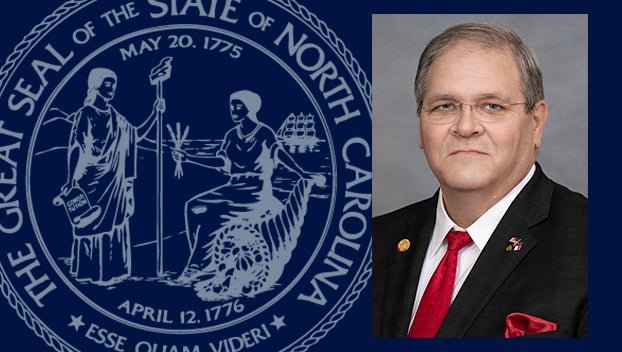Tayloe Hospital nursing grads reunite
Published 8:35 pm Friday, October 6, 2017

- WILD IRISH ROSE: Sophie Mitchell (foreground), a 1944 graduate of the nursing program at Tayloe Hospital in Washington, sings along with “Wild Irish Rose” with members of the Carolina Chord Connection barbershop chorus on Sept. 30. (Vail Stewart Rumley/Daily News)
During the day, they learned. At night, they worked. These young women were studying life and death, and nursing people to back to health, when the Japanese bombed Pearl Harbor, when sentries walked the streets of Washington and blackouts were mandatory.
“We had only one light on the nurse’s desk — one blue light,” said Sophie Mitchell, age 94.
They were trailblazers; young women who set out on their own to follow a dream.
“It’s a grand calling. I always wanted to be a nurse,” said Marie Robinson, also 94 years old.
These women, along with Lena Page, Mildred Buckman Spivey, Tootsie Jackson and Juanita Calloway Jackson, are some of the last graduates of Tayloe Hospital’s nursing program. The hospital was founded in 1903 by three doctors: D.T. Tayloe, Joshua Tayloe and Ed Brown. In 1907, the first nursing class was graduated from what was considered an intensive program: three years of on-the-job training. As years passed, more generations of Tayloe doctors joined the staff; more nurses got their start in a program that was like no other. The doctors on staff did much of the teaching; the nurses lived on the hospital campus and dedicated their lives to school and those they were serving.

THE OLD DAYS: (From left to right) Sophie Mitchell, Marie Robinson and Lena Page share stories of what nursing was like in the World War II era.
“We made four one dollar bills a month, room and board,” Mitchell said. “We worked hard, and we had fun.”
“I was just like a big family. … We had one bathroom and eight girls. We were always short-sheeting somebody,” Robinson laughed.
They remained a family through the years, according to Ginny Batts, who grew up hearing stories of that era, as the women kept one another in stitches during their visits. Batts’ mother, Eldean Calloway Gerard, was a member of the Tayloe Hospital nursing program’s Class of 1944.
“They had the most amazingly funny stories. They always had this upbeat, really great sense of humor,” Batts said. “Whenever they came I’d say, ‘Let me hear a story. Tell me a story.’ They’re like all my mommas, I’ve been raised around them my entire life.”
The stories abounded Sept. 30, as Batts brought the remaining nurses together at her Washington home, where they had lunch and were serenaded members of the Carolina Chord Connection barbershop chorus.
“They’re just fascinating people,” Batts said. “They just seem to have never seen that they did anything remarkable — coming over here as young women from different towns. For me, that was quite courageous for the late ’30s and ’40s.”
These nurses-in-training cut and autoclaved their own gauze pads, made cotton swabs and sharpened needles with sandpaper, because needles were hard to come by.
“We were there when something new came out called penicillin,” Mitchell said. “New nurses can’t believe when we tell them what it was like back then.”
The nursing program was discontinued in 1949 due to increasing regulations from the state nursing board. The remaining nursing students at Tayloe Hospital were transferred to other programs. But for these graduates, their nursing school experiences remain the source of some fond memories, and fondness for the many people they cared for.
“We didn’t kill them,” Mitchell laughed. “But we loved them to death.”






